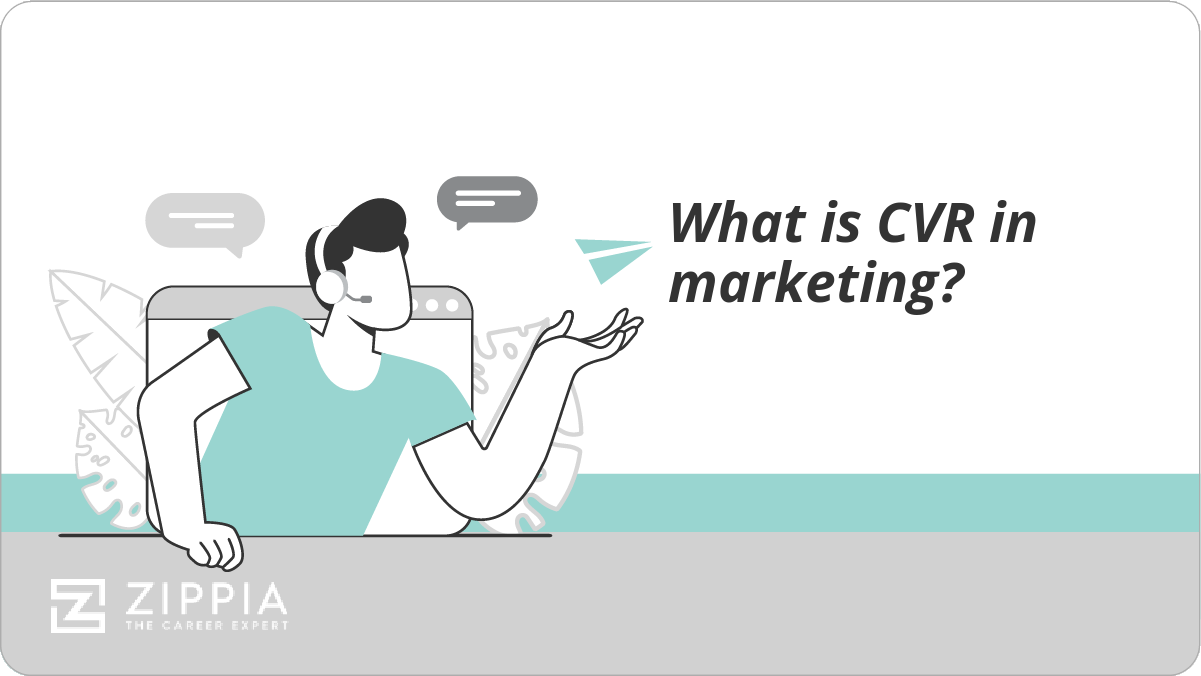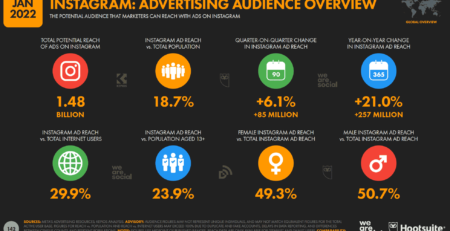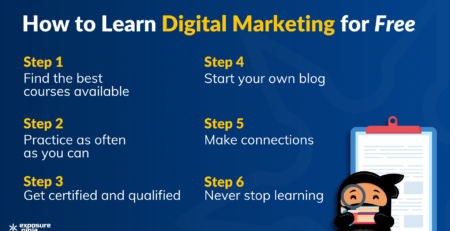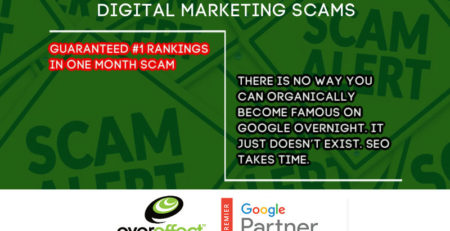What Does Cvr Stand For In Marketing?
When it comes to marketing, the world of acronyms can be quite overwhelming. One acronym you may come across is “CVR,” but what does it stand for? Well, let’s dive into the exciting world of marketing and uncover the meaning behind CVR.
Here’s the scoop: CVR stands for Conversion Rate. But what exactly does that mean? In simpler terms, it’s a metric used to measure how many people take a desired action, such as making a purchase or filling out a form, in relation to the number of people who visit a website or see an advertisement.
So, why is CVR important in marketing? It’s like a report card that tells you how effective your marketing efforts are in turning potential customers into actual paying customers. Plus, knowing your CVR can help you make data-driven decisions to optimize your marketing strategies. Pretty cool, huh? Now let’s dive deeper into the world of CVR and unlock its secrets.
What Does Cvr Stand for in Marketing?
Welcome to the world of marketing jargon! If you’re new to the field, you may come across an abbreviation called “CVR” and wonder what it stands for. Fear not, as we are here to demystify this acronym for you. CVR stands for “Conversion Rate” in marketing. In simple terms, it is a metric used to measure the effectiveness of a marketing campaign or a website in converting visitors into customers.
Understanding Conversion Rate
Your marketing efforts may involve various strategies, such as advertising, email campaigns, or social media promotions. The ultimate goal of these efforts is to persuade your target audience to take a specific action, whether it’s making a purchase, signing up for a newsletter, or filling out a contact form. Conversion rate comes into play when you want to measure the success of these actions.
Conversion rate is usually expressed as a percentage. It is calculated by dividing the number of conversions (actions taken by visitors) by the total number of visitors to your website or the total number of people exposed to your marketing campaign. The resulting percentage tells you how effective your marketing efforts are in driving desired actions from your audience.
How to Calculate Conversion Rate
Calculating conversion rate is a relatively straightforward process. Let’s say you run an online store. In a given month, you receive 10,000 visitors to your website, and out of those visitors, 500 make a purchase. To determine your conversion rate, divide the number of conversions (500) by the total number of visitors (10,000) and multiply by 100. In this case, your conversion rate would be 5%.
To put it simply, conversion rate tells you what percentage of your website visitors or campaign viewers are taking the desired action. It is a critical metric that allows you to gauge the results of your marketing efforts and make informed decisions to improve your strategies.
Why Conversion Rate Matters
Now that you know what CVR stands for and how to calculate it, let’s explore why conversion rate matters in marketing. As a marketer, your ultimate goal is to generate revenue and grow your business. Conversion rate helps you understand how successful you are in achieving these goals by providing insights into customer behavior.
A high conversion rate signifies that your marketing strategies are effective in enticing visitors to take the desired action. It means they find your offers compelling and are willing to engage with your brand. On the other hand, a low conversion rate may indicate that there are barriers preventing visitors from converting, whether it’s design issues, confusing messaging, or a lack of trust.
By monitoring and optimizing your conversion rate, you can fine-tune your marketing efforts to generate better results. You can test different approaches, improve user experience, and identify areas that need improvement. Ultimately, a higher conversion rate leads to more customers, increased revenue, and a stronger bottom line.
Increasing Conversion Rate: Tips and Strategies
Now that you understand the importance of conversion rate, let’s discuss some tips and strategies to help you increase it.
1. Optimize Your Website:
An easily navigable and user-friendly website is crucial in converting visitors into customers. Ensure that your website is responsive, loads quickly, and has clear calls-to-action. Optimize your landing pages for conversion by removing distractions, improving the design, and creating persuasive copy.
2. Understand Your Audience:
Knowing your target audience is key to creating tailored marketing campaigns. Conduct market research to understand their needs, preferences, and pain points. Craft messages that resonate with them and offer solutions to their problems.
3. Use Compelling Visuals:
Visual content is highly engaging and can help boost conversions. Utilize high-quality images, videos, and infographics that communicate your brand’s value proposition effectively.
4. Implement A/B Testing:
Testing different variations of your marketing campaigns or website elements can provide valuable insights into what resonates best with your target audience. Conduct A/B tests to compare two versions of a page or campaign and analyze the results to make data-driven decisions.
5. Provide Social Proof:
Include testimonials, reviews, and case studies on your website to build trust with potential customers. People are more likely to take action if they see that others have had a positive experience with your brand.
6. Simplify the Conversion Process:
Make it easy for visitors to convert by minimizing the number of steps or form fields required. Optimize your checkout process for a seamless experience, reducing friction and increasing the likelihood of completion.
The Impact of Conversion Rate on Marketing Success
Conversion rate is an essential metric that directly influences your marketing success. By understanding the concept, calculating it accurately, and implementing strategies to improve it, you can boost your marketing ROI and achieve your business goals. So, the next time you come across the acronym CVR in marketing, you’ll know exactly what it stands for and why it matters!
Key Takeaways: What Does Cvr Stand for in Marketing?
- CVR stands for Conversion Rate in marketing.
- Conversion Rate measures the percentage of visitors who take a desired action on a website.
- CVR helps marketers understand the effectiveness of their marketing campaigns.
- A higher CVR indicates better conversion optimization and higher return on investment.
- Improving CVR involves optimizing website design, enhancing user experience, and creating persuasive content.
Frequently Asked Questions
In the world of marketing, the term CVR is often thrown around. CVR stands for Conversion Rate. It is a crucial metric that helps measure the effectiveness of marketing campaigns. Here are some frequently asked questions about CVR and its significance in marketing.
1. How is Conversion Rate (CVR) calculated?
Calculating Conversion Rate is a simple yet powerful way to measure the success of your marketing efforts. CVR is calculated by dividing the number of conversions by the total number of visitors or clicks multiplied by 100. The resulting percentage is the conversion rate. For example, if you had 100 visitors and 10 of them converted, your CVR would be 10%.
Monitoring and improving CVR is essential as it helps you understand how many potential customers are taking the desired action, such as making a purchase or filling out a form, in response to your marketing campaign.
2. What does a high CVR indicate?
A high CVR indicates that a significant percentage of your website visitors or ad viewers are taking the desired action. This indicates that your marketing efforts are effective in persuading and convincing potential customers to convert. It shows that your messaging, calls to action, and overall user experience are successful in driving conversions.
A high CVR can also suggest that you have a strong target audience match. This means that the people who land on your website or see your ads are already interested in your product or service, making them more likely to convert. It’s crucial to monitor your CVR regularly and continue optimizing your marketing strategies to maintain a high conversion rate.
3. What are the factors that can influence CVR?
Several factors can influence the CVR of your marketing campaign. Firstly, the clarity and relevance of your messaging play a significant role. If your message aligns well with the needs and desires of your target audience, they are more likely to convert. Additionally, the ease of the conversion process, including a simple checkout process or an easy-to-fill form, can positively impact CVR.
Another factor is the overall user experience on your website or landing page. If it is smooth, intuitive, and visually appealing, visitors will be more inclined to take the desired action. Lastly, the credibility and trustworthiness of your brand can influence CVR. Positive reviews, testimonials, and social proof can instill confidence in potential customers, leading to higher conversion rates.
4. Why is it important to track and improve CVR?
Tracking and improving CVR is vital for the success of your marketing campaigns. It allows you to identify which strategies and tactics are effective in driving conversions and which ones need improvement. By monitoring your CVR, you can gain insights into what is resonating with your target audience and make data-driven decisions to optimize your marketing efforts.
Improving CVR can lead to significant business growth and increased revenue. A small increase in conversion rate can result in a substantial increase in the number of conversions and ultimately more sales or leads. By continuously working on improving CVR, you can maximize the return on your marketing investment and achieve better overall campaign performance.
5. How can you improve your CVR?
There are several strategies to improve your CVR. Firstly, make sure your call-to-action (CTA) is clear, compelling, and easy to spot. It should clearly communicate the value proposition and encourage visitors to take the desired action. Secondly, optimize your landing page or website for a seamless user experience. Ensure it loads quickly, has intuitive navigation, and presents information in an organized and visually appealing manner.
Testing different elements of your marketing campaigns, such as headlines, visuals, and CTA placement, can also help improve CVR. Running A/B tests and analyzing the results can provide valuable insights into what resonates best with your target audience. Additionally, leveraging social proof, such as customer testimonials and reviews, can boost credibility and trust, leading to higher conversion rates. Lastly, personalizing your messaging and offers based on your audience’s preferences and behaviors can significantly improve CVR by making the user feel more connected and valued.
Basic Media Metrics Explained | CPM | CTR | CPC | CPA | CVR | Programmatic Advertising EP 8
Summary
So, to sum things up, CVR stands for Conversion Rate, a metric that helps marketers measure how effective their campaigns are at turning visitors into customers. It’s calculated by dividing the number of conversions by the number of visitors and multiplying by 100. A higher CVR means more successful conversions, indicating a well-performing marketing strategy.
In marketing, it’s important to track and optimize your CVR to improve your campaign’s effectiveness. By testing different elements, such as ad copy, images, and landing page design, you can find the winning combination that maximizes your conversion rate. Remember, a strong CVR leads to more sales, higher revenue, and a better return on investment for your marketing efforts.











